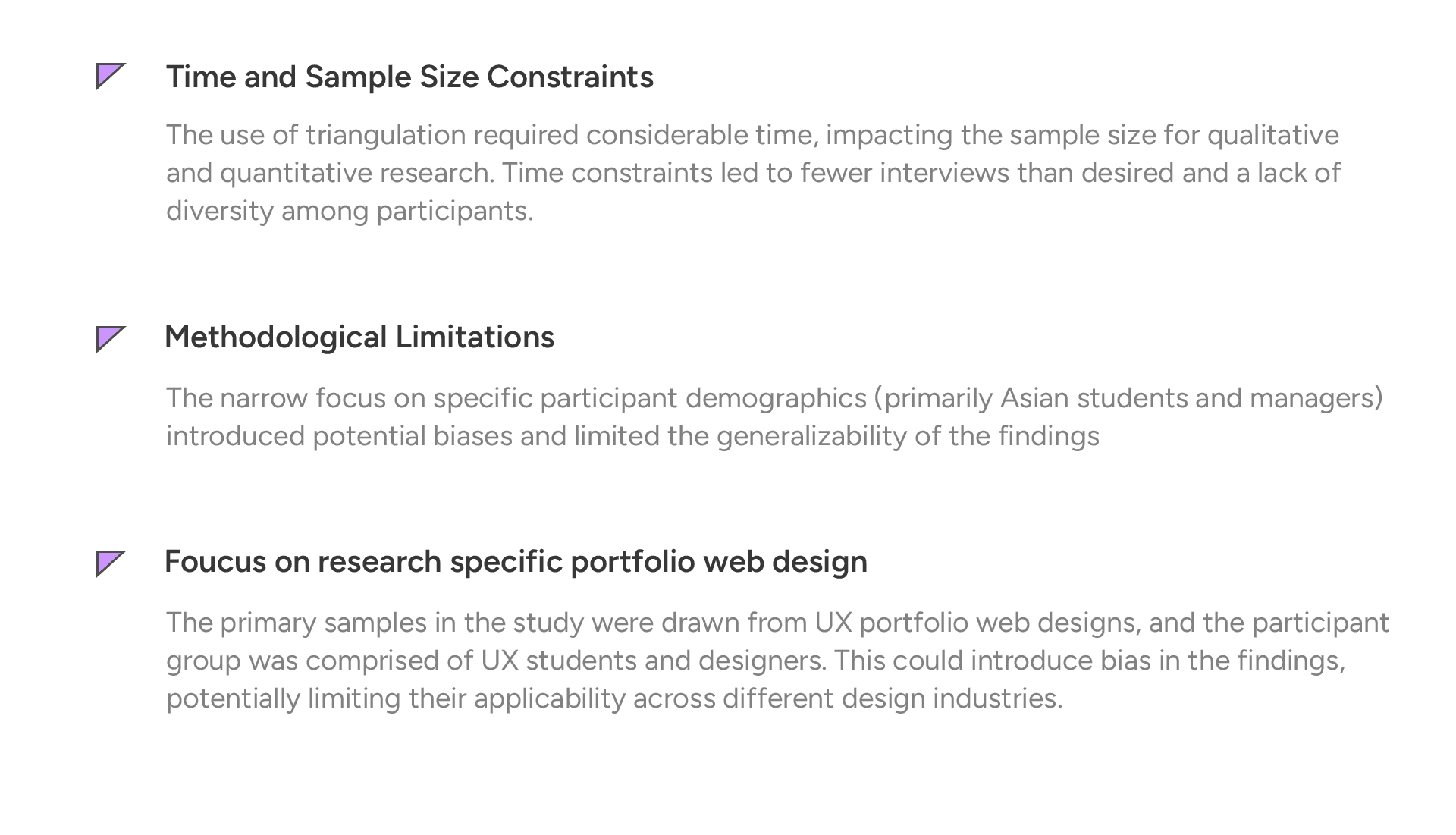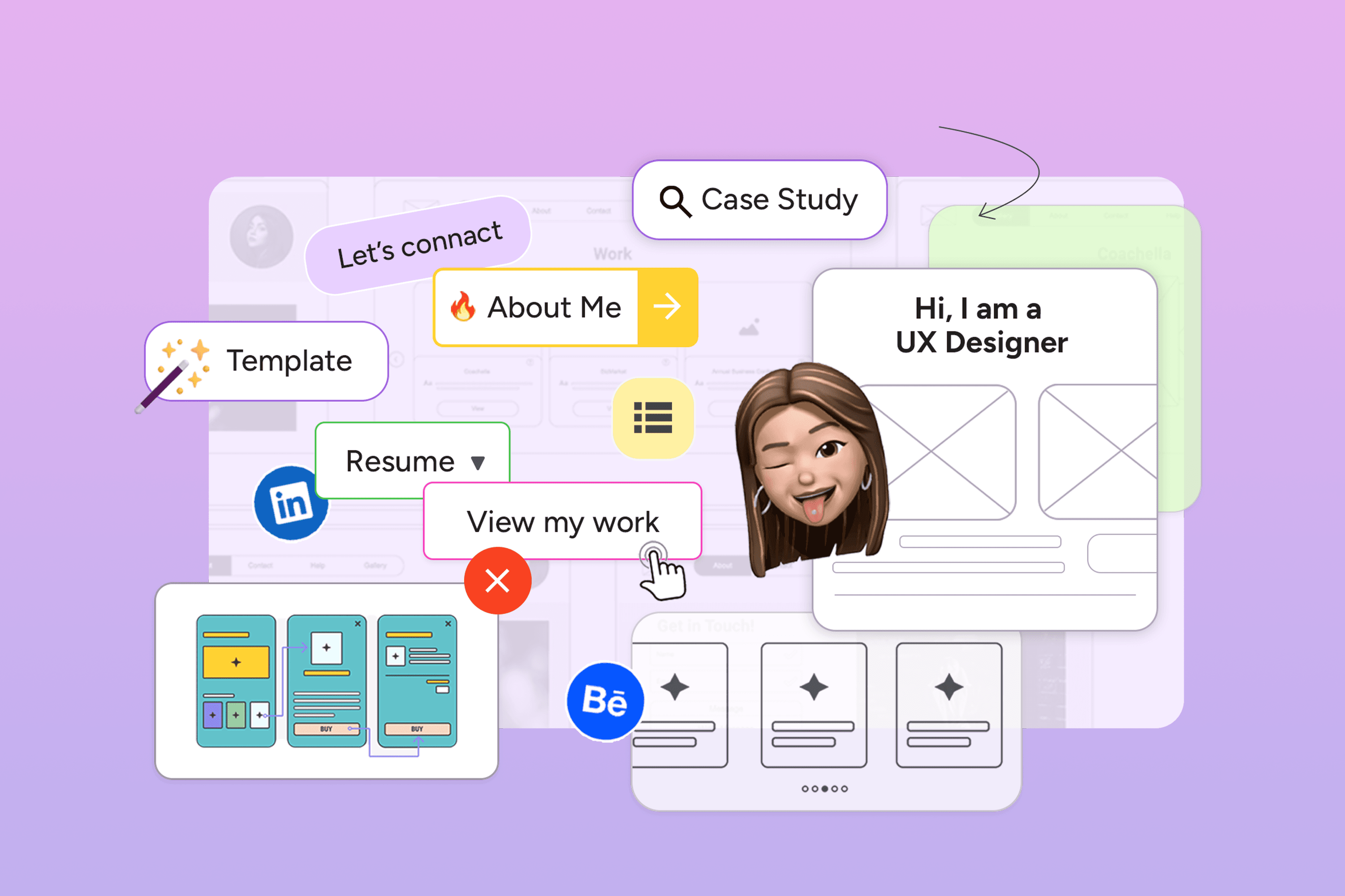Unraveling the Influence of Templates on Portfolio Web Design
Overview
The shift to digital portfolios has boosted the demand for online portfolio templates, but these often limit design uniqueness, leading to similar-looking portfolios. This research uses a triangulation method to explore how templates affect portfolio web design trends and examines user motivations and perceptions from corporate and designer viewpoints. It also investigates how users can stand out themselves despite the prevalence of template-based designs.

Research Objective
Using different research methods to explore the impact of templates on visual trends in portfolio web design.
Gain insights into the psychology and motivations behind users' use of templates.
Contemplate strategies to break free from template constraints to achieve uniqueness in design.
Challenge
Combining qualitative and quantitative research methods effectively to ensure a comprehensive exploration of the topic.
Identifying and elucidating prevalent visual elements and design patterns in portfolio website templates.
Point out the challenge of how users can craft a unique portfolio in a saturated template market.
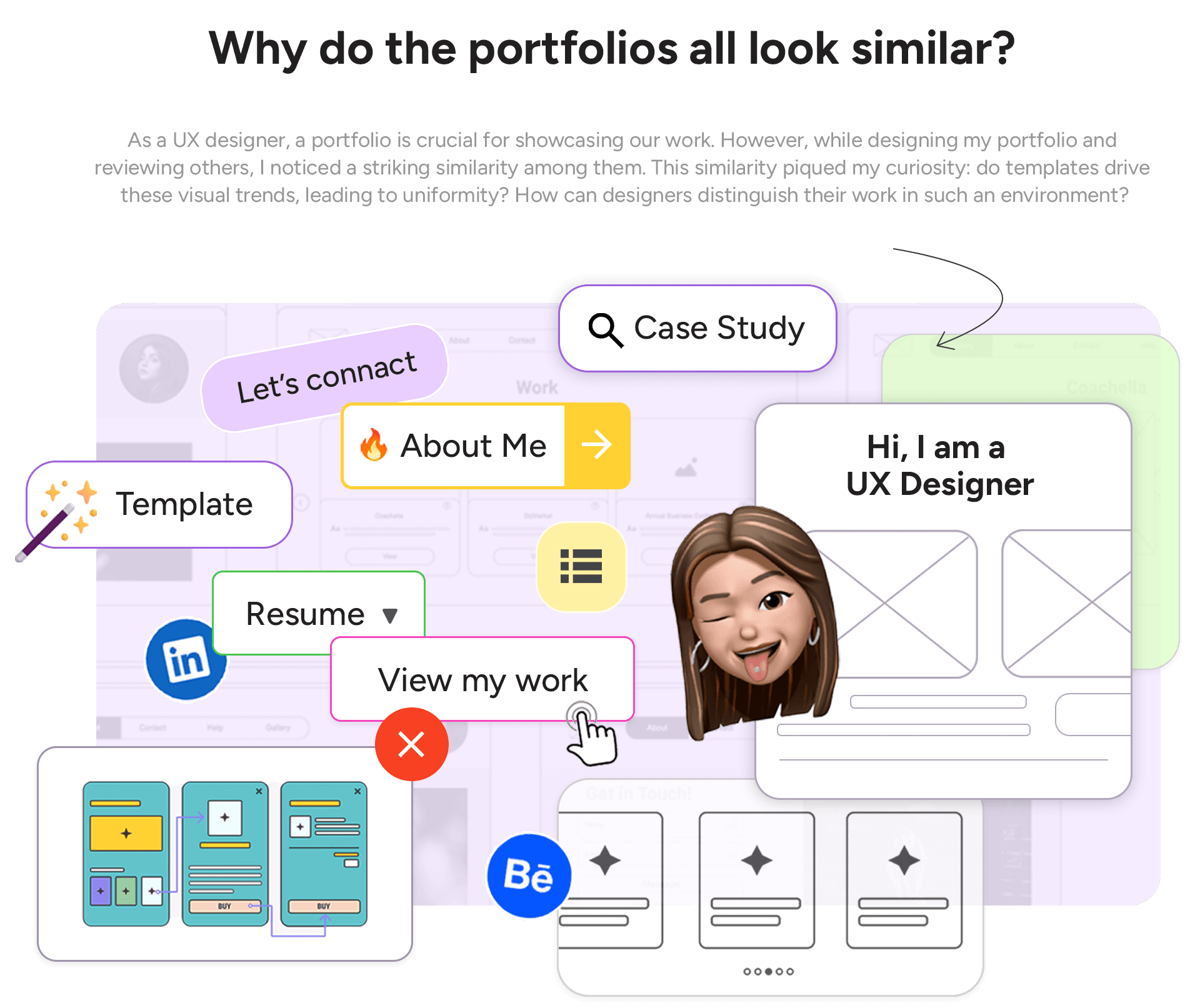
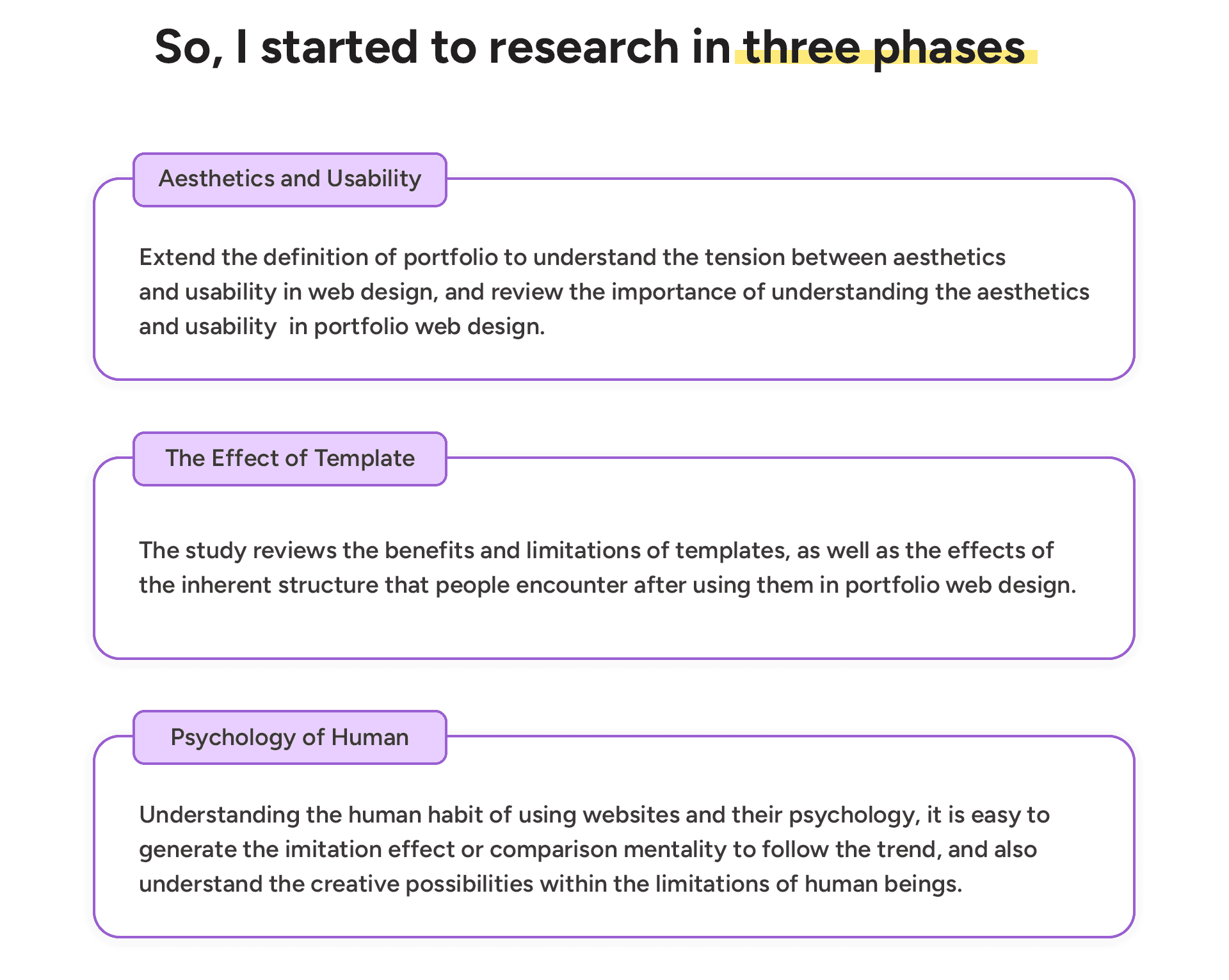
After researching, I found a gap in previous studies on whether template designs standardize visual aesthetics and limit creativity. Additionally, the triangulation research method has not been used before to examine the impact of templates. Therefore, I've come up with two questions to thoroughly explore the impact of templates:
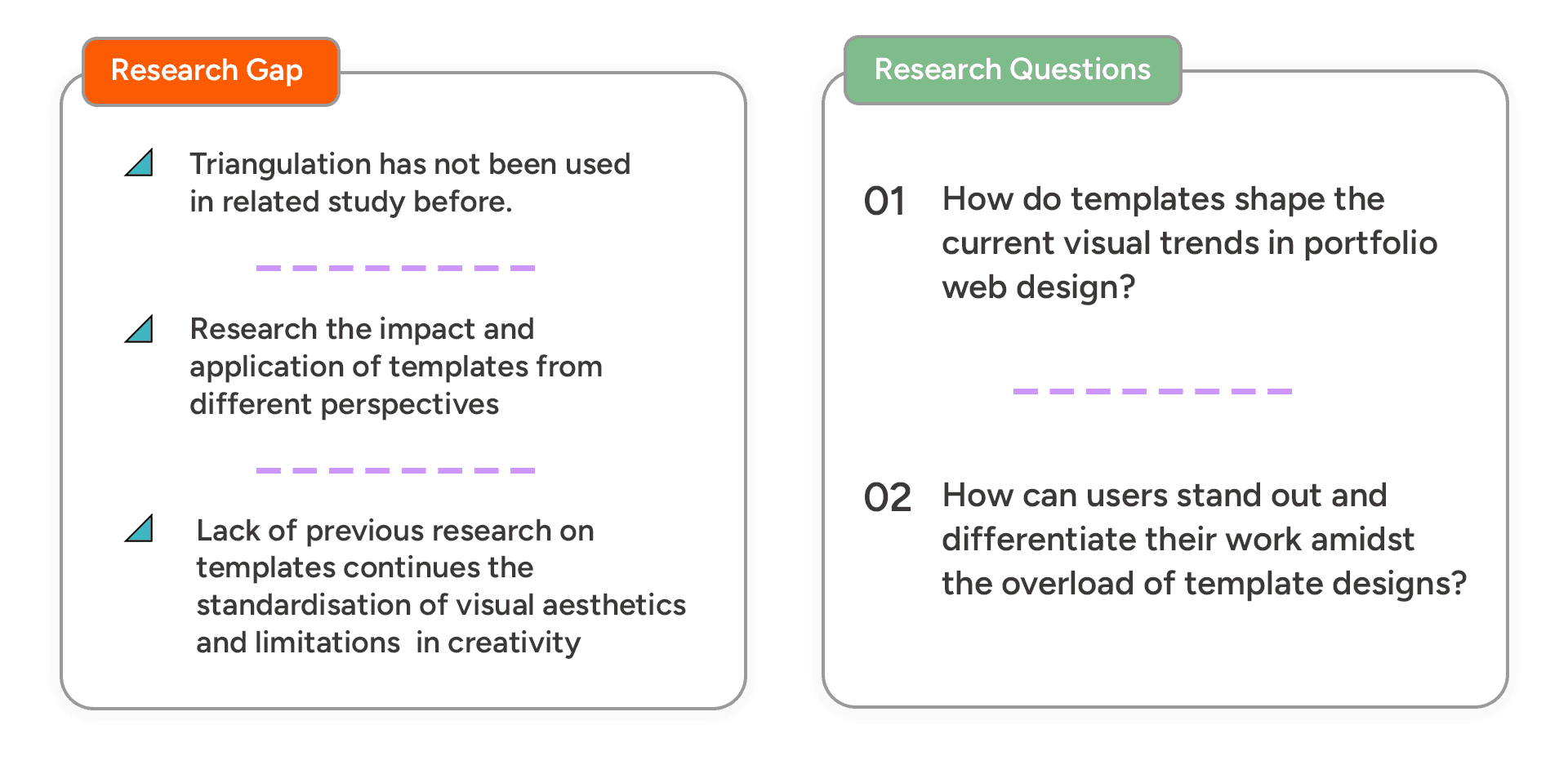
Research Approach
To better answer the research questions, I employ the triangulation method, a component of mixed research methodology, to gather data and analyse results. This approach encompasses both qualitative and quantitative methods to investigate the hypotheses to address the research questions.
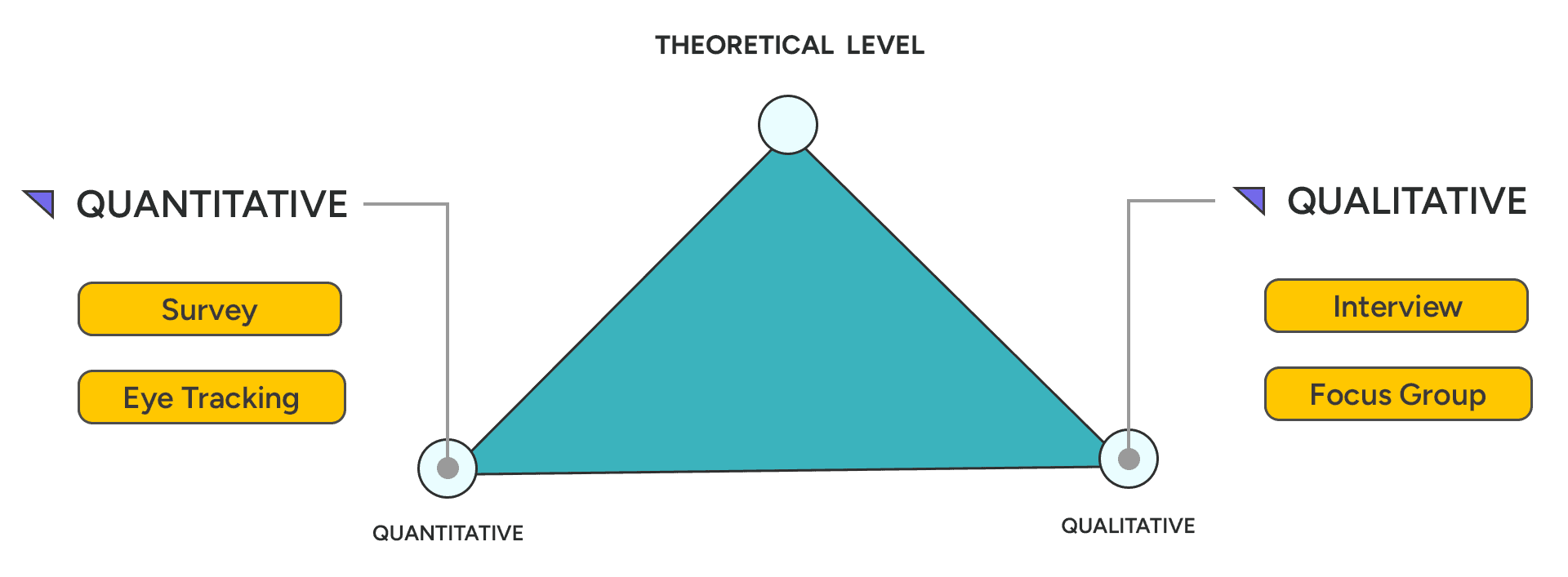
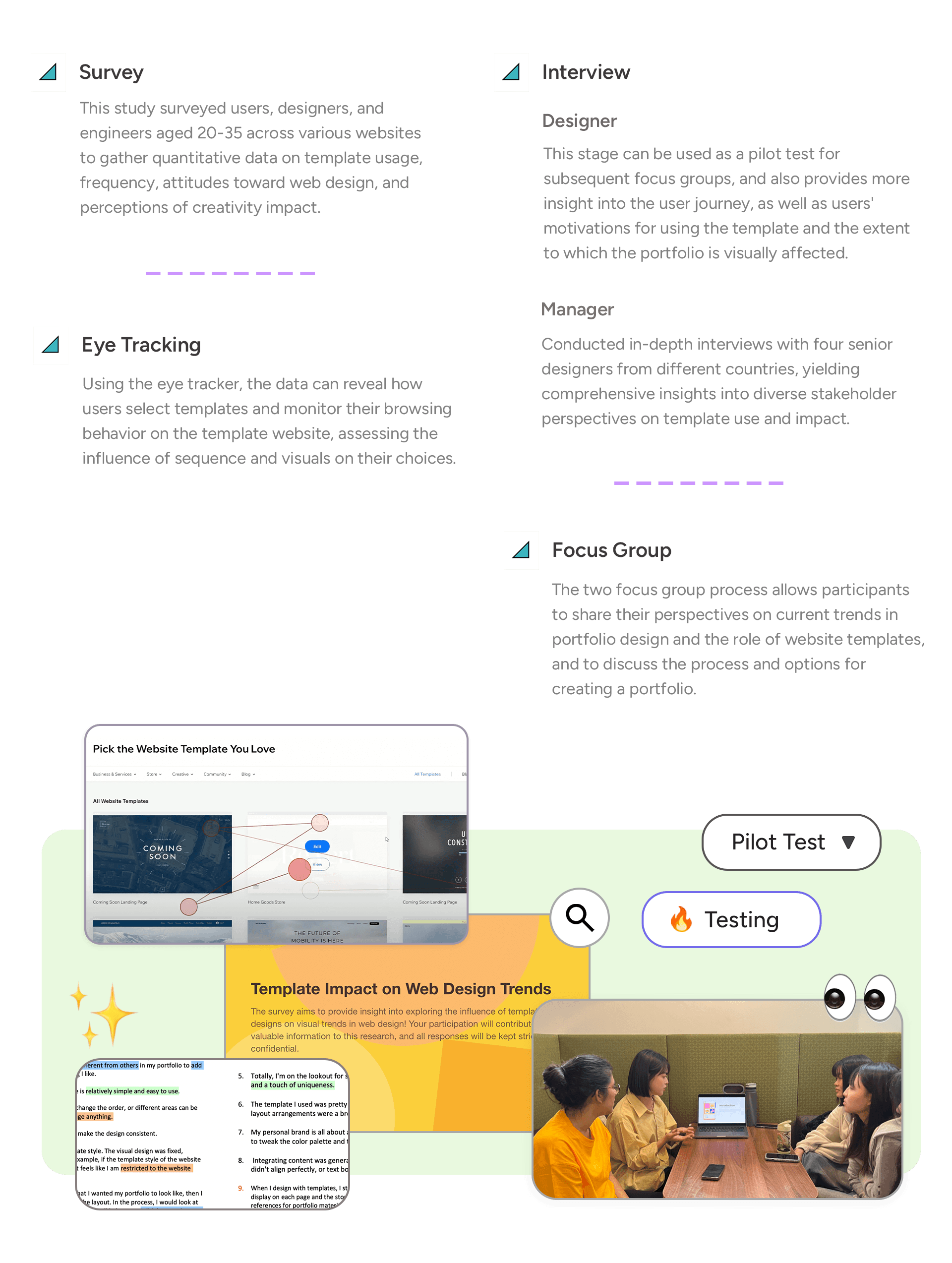
Analysis Approach
This research will first analyze the data individually, then group and cross-analyze the results to gain more credible insights. This approach will provide both qualitative and quantitative perspectives, enhancing the understanding of the research questions and hypotheses. The analysis methods are categorized by research questions below.
RQ1: How do templates shape the current visual trends in portfolio web design?
RQ2: How can users stand out and differentiate their work amidst the overload of template designs?
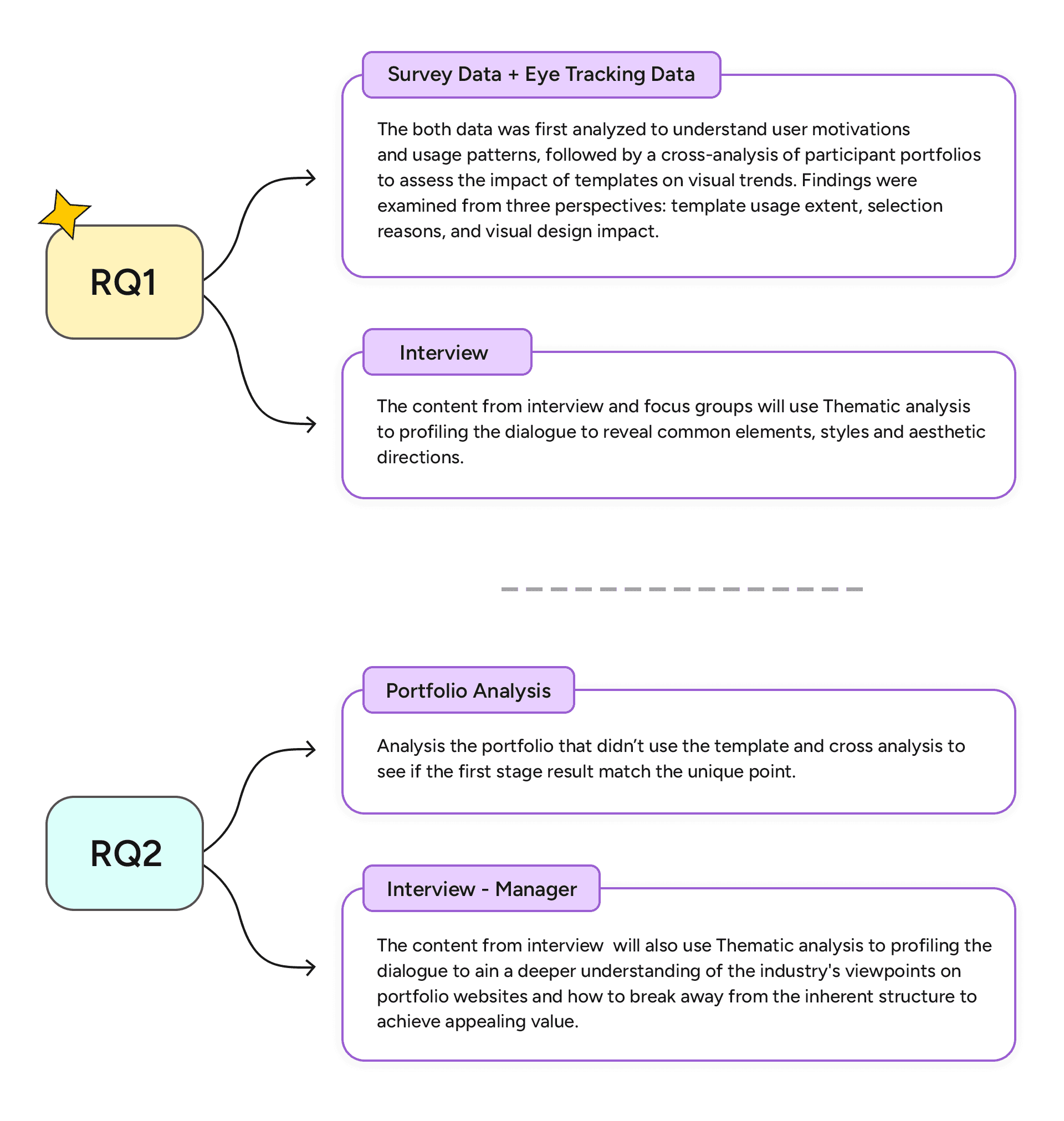
Findings
The findings present the qualitative and quantitative result and uses cross-analysis in triangulation find the answer for two research questions.
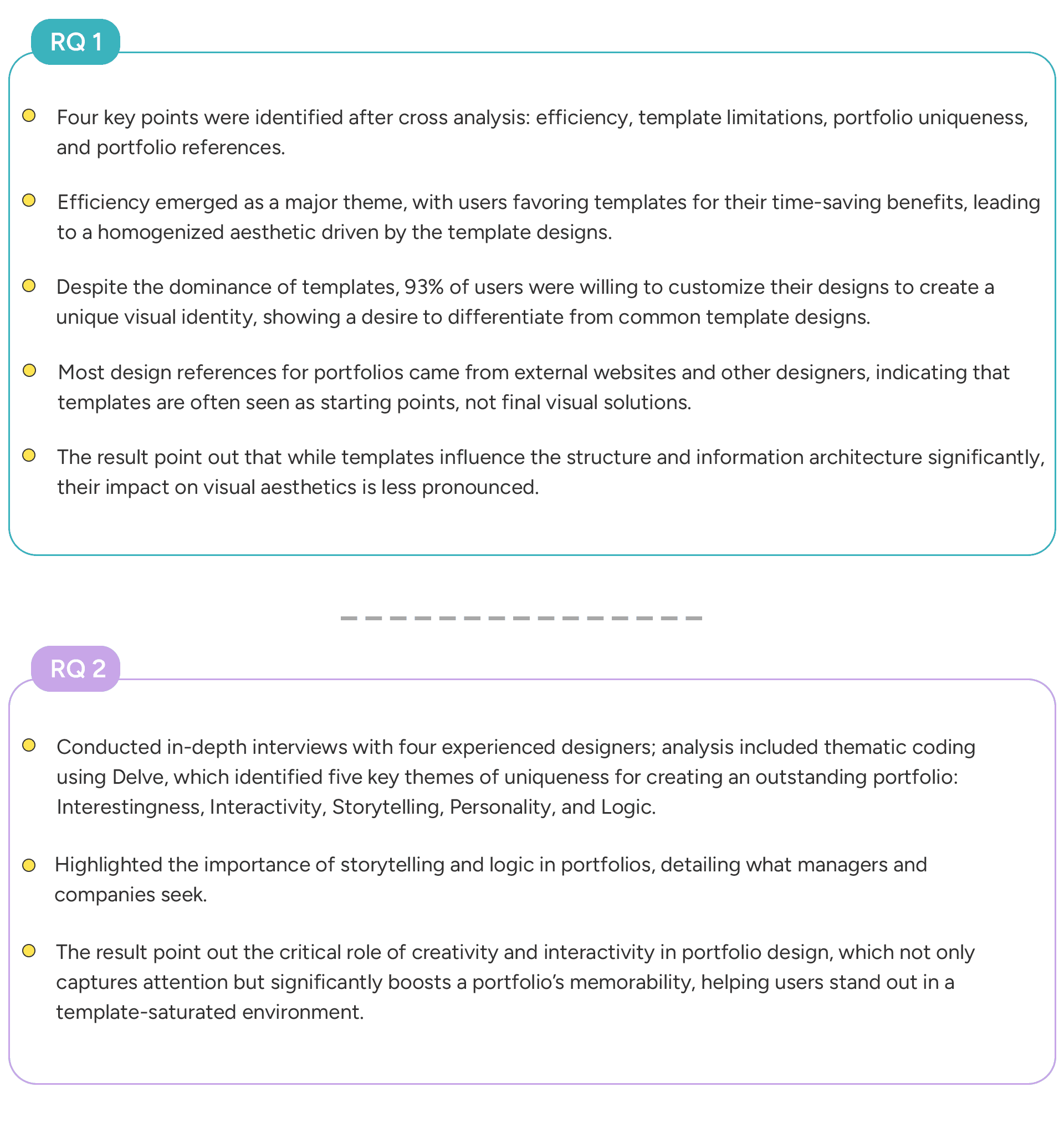
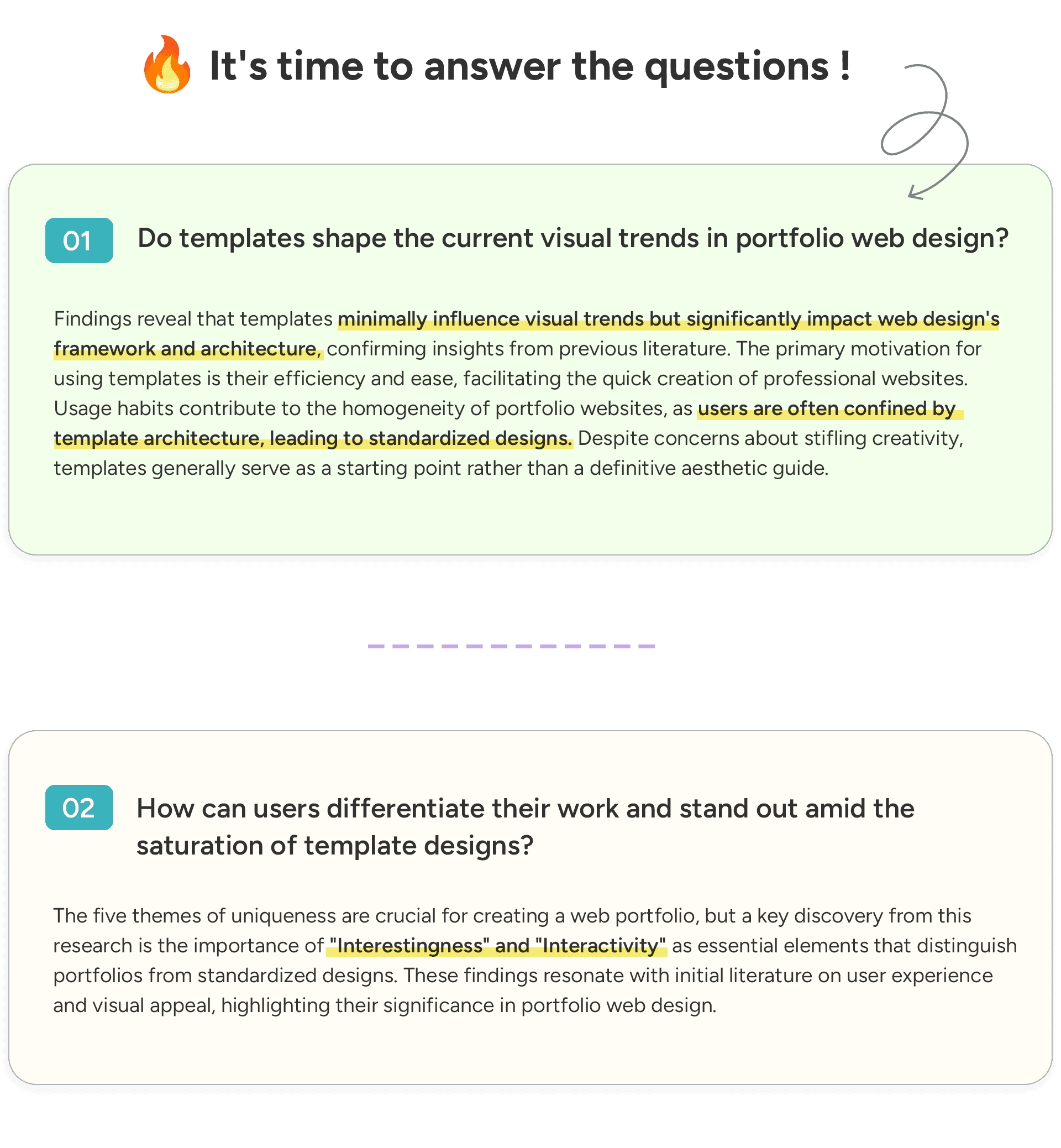
Learnings
The research's unexpected results challenged my initial assumptions, emphasizing the importance of flexibility and openness throughout the research process. These findings influenced my methodology choice and highlighted several limitations encountered during the research, guiding me reflections on how I can improve future UX research projects.
